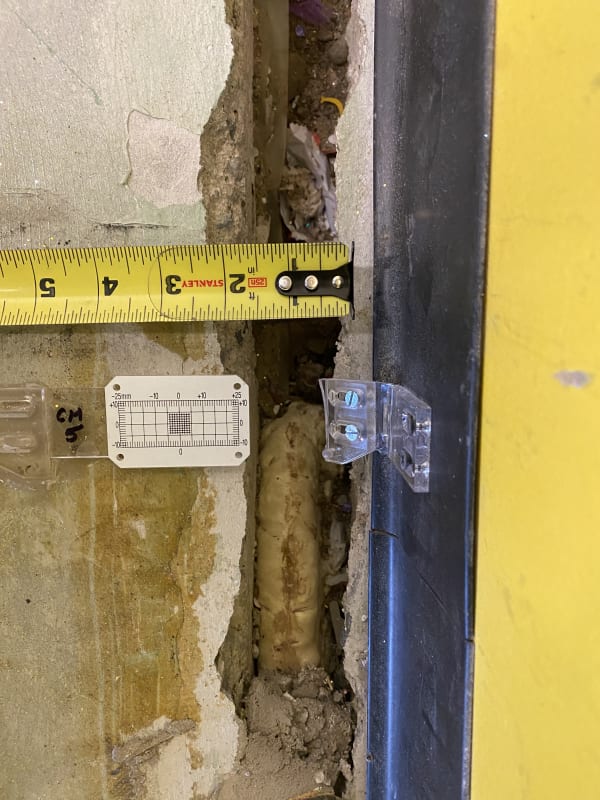I have been contacted by a local church regarding cracks in the brick veneer of their building. The structure was built in 1925 and is a wood framed church with 4" brick veneer, sitting on a 10" thick concrete foundation wall. Cracks predominantly appear above basement window openings and continue into the stone veneer on the foundation. I suspect that these cracks above windows are old and are not moving, but want to monitor the cracks especially through the spring thaw to confirm that suspicion.
The crack locations are located in prominent areas visible from the street. Most crack monitors on the market recommend epoxy adhesive as a preferred method of install, which is not tolerable in this situation. Has anyone successfully used anything easier to remove to fasten crack monitors? I was picturing something along the lines of a butyl tape or other similarly sticky adhesive that would be removable without visibly damaging the brick veneer. Humboldt Manufacturing was somewhat helpful, indicating that a two-sided tape may work if adequately protected from the weather.
The crack locations are located in prominent areas visible from the street. Most crack monitors on the market recommend epoxy adhesive as a preferred method of install, which is not tolerable in this situation. Has anyone successfully used anything easier to remove to fasten crack monitors? I was picturing something along the lines of a butyl tape or other similarly sticky adhesive that would be removable without visibly damaging the brick veneer. Humboldt Manufacturing was somewhat helpful, indicating that a two-sided tape may work if adequately protected from the weather.

![[ponder] [ponder] [ponder]](/data/assets/smilies/ponder.gif)
